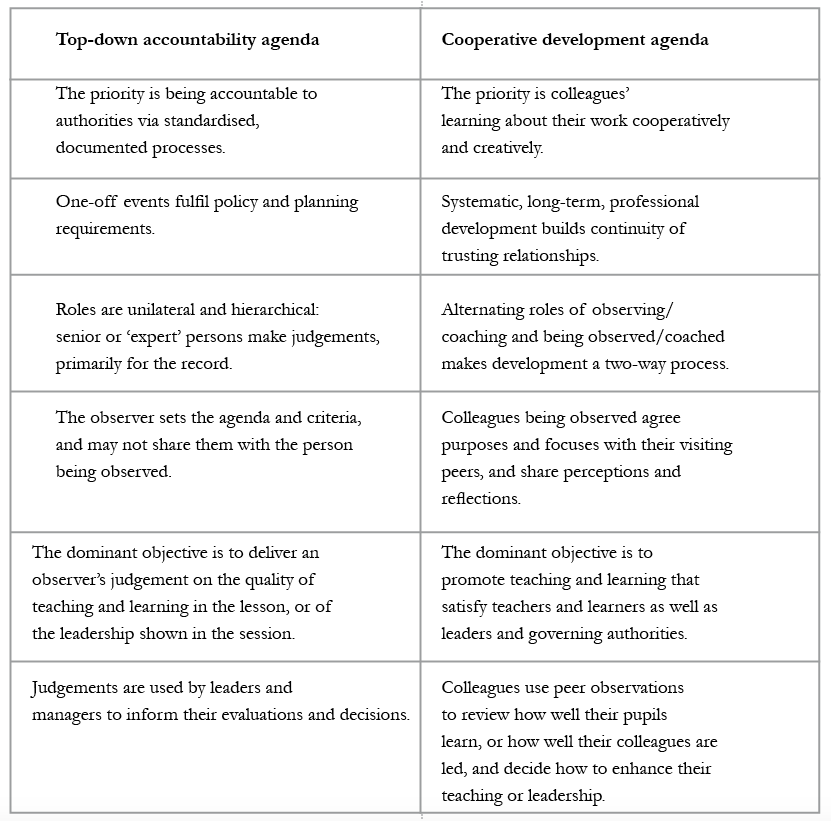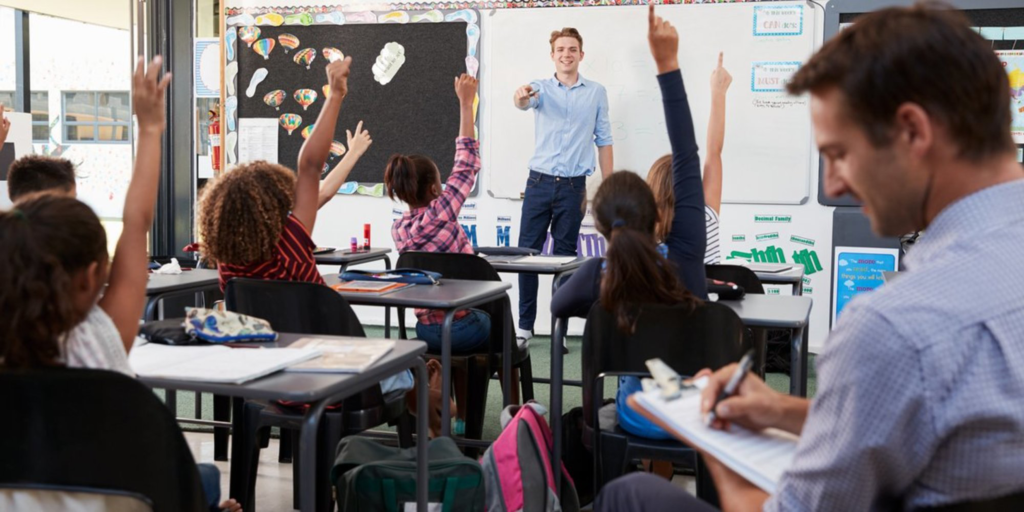
Developing your approach to peer observations
Visits to observe you at work can be made by a range of people in a range of roles: e.g. fellow team members and other peer colleagues; mentors, team and senior leaders; and governors, researchers and consultants. In those cases you can agree with your visitors how they might assist your ongoing learning. Developmental or peer observation’s unique contribution is that it combines reflective practice, coaching and mentoring. It is steered by colleagues who choose what to focus on, and enables colleagues to be accountable to one another on their own terms.
Different purposes
There are plenty of other occasions when work observations have to record judgements about the quality of learning, teaching and leadership, such as for example according to Ofsted’s (Office for Standards in Education) or other authorities’ stipulations. There are also occasions when non-voluntary coaching and observation are used to guide colleagues whose work is judged to be below what the school requires or expects. There are significant differences between accountability dictated by external or public agencies and locally determined development. It is important to know where you stand on any given occasion.

Creating a climate for peer observations
Peer observations can be led by the colleague whose work is observed. The focus may be specific and detailed, or relate to themes or concerns you choose. Peer observations can access individuals’ agendas and concrete micro-aspects of day-to-day working, and explore how those might connect with teams’ and whole-school priorities. There are strategic decisions to be made about:
- the role that a training group might play in supporting and overseeing peer observations across your school
- guidance colleagues might be given about choosing who to work with and how to prepare their collaborations
- how much funding is available, and how it can be used to support the release of colleagues for preparations, visits to lessons or other activities, and feedback meetings.
The onus on senior and middle leaders is to ally systems that promote whole-school improvement with strategies that enable colleagues to learn about teaching and leadership. This means devoting specific time to intensive and extensive sharing of information and ideas about what is going well and how things might go even better. It also means funding the several kinds of activity associated with peer observations. One average-sized primary school that made this a priority, for example, had nine supervisors paid on the staff, allowing consistency of personnel and cover, and enabling colleagues to manage absence from a class with flexibility and confidence.
